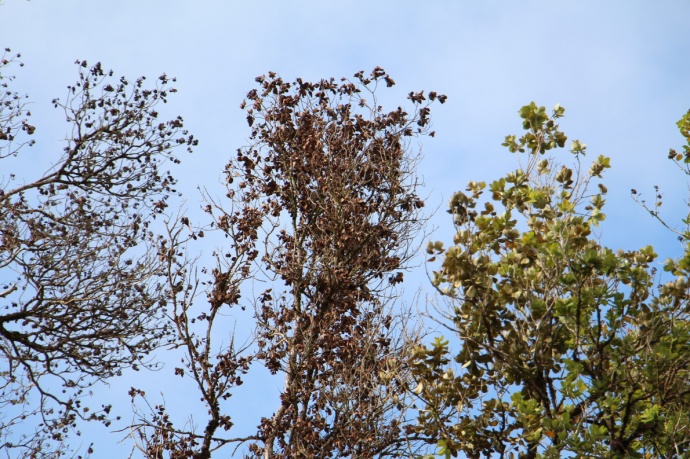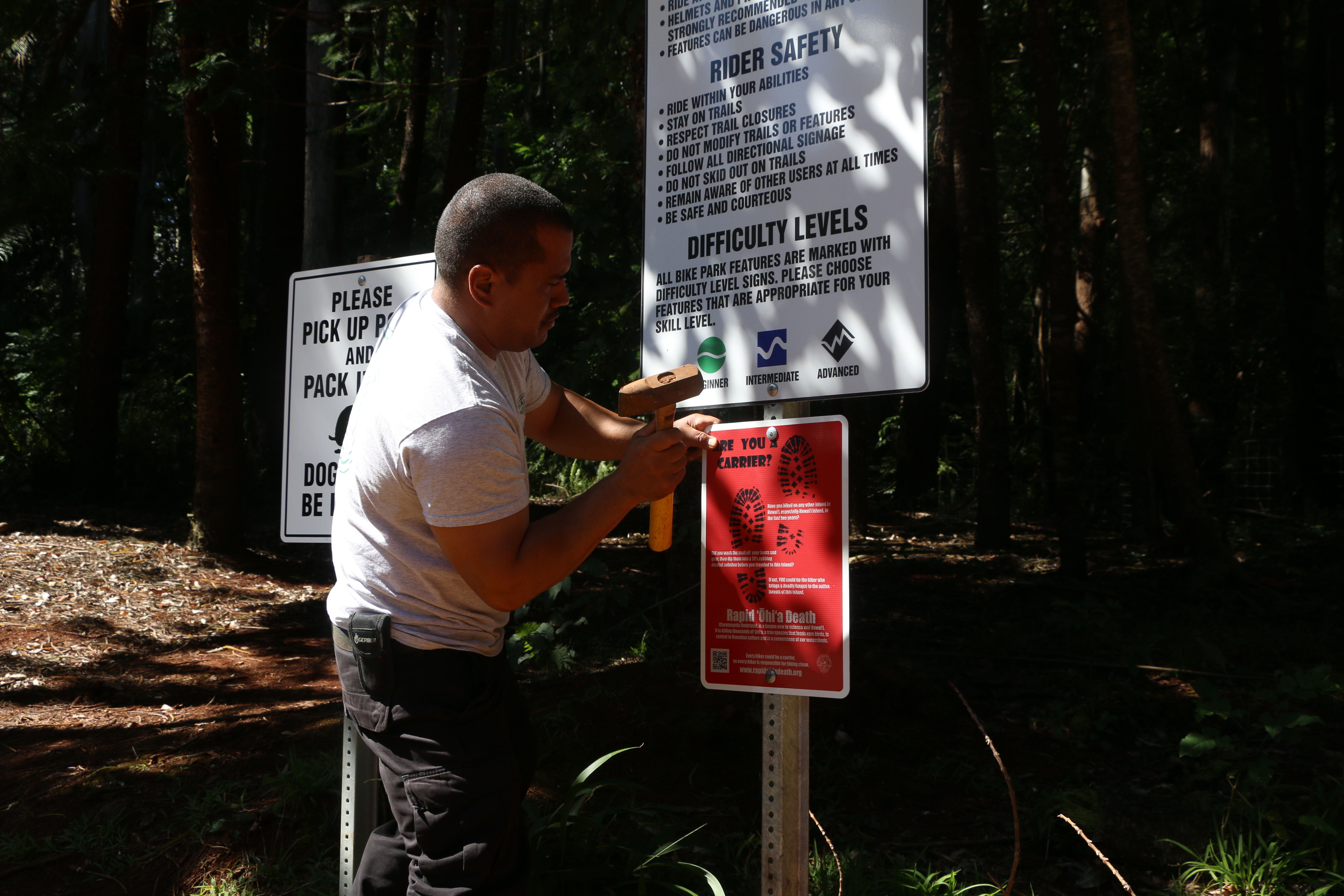Permanent Quarantine on Transport of ʻŌhiʻa
A new administrative rule places a permanent restriction on the movement of ʻōhiʻa and soil from Hawaiʻi Island.
The rules impose permanent quarantine restrictions on the intrastate movement on ʻōhiʻa and other material that may spread Rapid ʻŌhiʻa Death, also known as ʻŌhiʻa Wilt, which is destroying the native ʻōhiʻa forests on Hawaiʻi Island.
These permanent rules replace the emergency interim rules established in August 2015. To date, the disease has only been detected on Hawaiʻi Island, but has invested an estimated 50,00 acres across the island.
The permanent rules restrict the movement of the following from Hawaiʻi Island:
· ʻŌhiʻa plants,
· ʻŌhiʻa plant parts including: flowers, leaves, seeds, stems, twigs, cuttings, untreated wood, logs, mulch greenwaste and frass (sawdust from boring insects, such as beetles); and
· Soil
Movement of ʻōhiʻa material and soil from Hawaiʻi Island requires inspection and a permit issued by the Plant Quarantine Branch of the Hawaiʻi Department of Agriculture. Testing and quarantine of some items may be required. Shippers may contact the Plant Quarantine offices in Hilo at (808) 961-9393 or Kona at 808-326-1077 for more information.
Any person who violates the rule may be charged with a misdemeanor and fined not less than $100 and up to $10,000. For a second offense committed within five years of a prior conviction under this rule, the person or organization shall be fined not less than $500 and not more than $25,000.
ROD is a deadly fungus that is killing ʻōhiʻa trees in East, West and South Hawaiʻi Island. It was first noticed in 2010 in Puna, but experts say it is not known how the disease entered the state or where it came from.
In 2014, the fungus was identified as Ceratocystis fimbriata by researchers at the US Department of Agriculture’s Daniel K. Inouye Agricultural Research Service. At the time, it was estimated that the disease covered approximately 6,000 acres from Kalapana to Hilo and exhibited tree mortality rates of more than 50 percent. That acreage has grown to an infestation that now covers 50,000 acres.
Public hearings on the proposed permanent rules were held statewide earlier this year. The Hawaiʻi Board of Agriculture approved the permanent rules on Oct. 18 and the rules were sent to the Lt. Governor’s office on Nov. 17, becoming effective on Nov. 27, 2016.

‘Ōhi’a are the backbone of our native rainforest; they feed the honeycreepers, they protect the watershed. Photo credit: DLNR.

Rapid ‘Ōhi‘a Death. Photo courtesy: DLNR.

Rapid ‘Ōhi‘a Death. Photo courtesy: DLNR.

Rapid ‘Ōhi‘a Death. Photo courtesy: DLNR.

Ohia wilt. Image credit UH-CTAHR/ J. B. Friday.

Individual signs are different in appearance, but contain the same basic message. Rapid ‘Ōhi‘a Death kills one of the most important native trees quickly and in wide swaths. Failing to follow the simple recommendations outlined on both signs could make you responsible for spreading this disease inter-island and intra-island. Photo credit: DLNR.

Individual signs are different in appearance, but contain the same basic message. Rapid ‘Ōhi‘a Death kills one of the most important native trees quickly and in wide swaths. Failing to follow the simple recommendations outlined on both signs could make you responsible for spreading this disease inter-island and intra-island. Photo credit: DLNR.







_1709057595069.webp)




